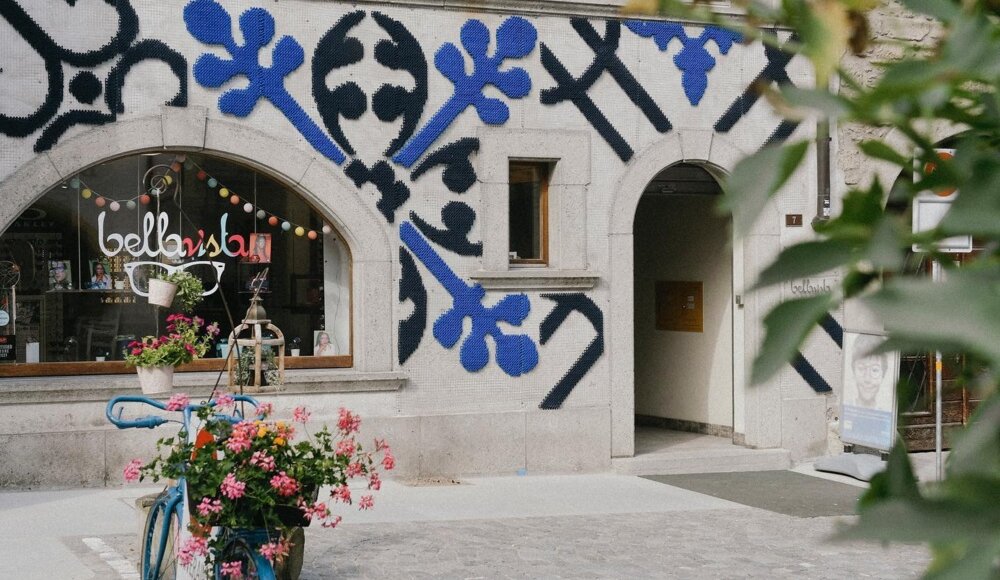Raquel Rodrigo's street art has a familiar feel to it, whether it's a bunch of yellow flowers wrapped around a window in Spain or dozens of pink roses falling down a house in Switzerland. The Spanish artist has been bringing her unique style to cities all over the world for most of the last ten years, bringing out of the shadows a method that goes back thousands of years.
Rodrigo said, "It's the embroidery that women have always done at home on sheets, towels, and pillows." "We want to take that embroidery out into the streets." To do this, she carefully copies the craft's defining features—the bright flowers, straight lines, and raised textures—on a large scale and puts them on everything from stairwells to storefronts. Rodrigo said that the result is a style that tries to live in the fuzzy area between the public and the private by putting something as private as a home's embroidery in the spotlight.
The artist from Valencia, Spain, had the idea in 2011 when she was asked to decorate the front of a store in Madrid that held sewing classes. As she tried to figure out how to show the store's purpose, her mind went back to a cross-stitching technique she had learned from her mother when she was a child. She made a pattern of red roses falling down the front of the building with the help of a computer. She then printed out a pixelated pattern to follow and carefully stitched it onto a metal mesh that was attached to the storefront. The move quickly became her trademark. As her project Arquicostura, which is a Spanish portmanteau of architecture and sewing, took her to places like London, Istanbul, and Philadelphia, people from all over the world sent her messages of support.
Some people saw things in her work that reminded them of their childhood, while others were reminded of their grandmothers and mothers. The larger meaning of the work was made clear by how often women were mentioned. The 38-year-old said, "Over time, I realized that this was a way to assert a female art that had been hidden for a long time." Her workshop in Valencia is based on the lessons that have been passed down through her family for generations. Depending on the project, she works with groups of up to 50 people to make large-scale copies of intricate embroidery. The process takes a long time; it can take up to three days for two people to embroider one square meter. Her mother sometimes helps out in the workshop. This is a nod to the wisdom she passed down to her children when she was trying to keep them busy decades ago.
Rodrigo has traveled all over the world for years, and every time he sees how her craft can help people get along, she is amazed. "Four years ago, I was in a village in Russia. The people there didn't speak English, so we couldn't talk to each other." Instead, the needlework, stitches, and yarn did most of the work, connecting people from different cultures and languages. "We found that we could work together even though we didn't all speak the same language." When the project was over, she was given hugs and tears as she left. She said, "It was like magic to be able to say so much through embroidery." "It really is a language spoken all over the world."


 Jean Dubreil
Jean Dubreil